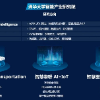Causal inference in spatial domains faces two intertwined challenges: (1) unmeasured spatial factors, such as weather, air pollution, or mobility, that confound treatment and outcome, and (2) interference from nearby treatments that violate standard no-interference assumptions. While existing methods typically address one by assuming away the other, we show they are deeply connected: interference reveals structure in the latent confounder. Leveraging this insight, we propose the Spatial Deconfounder, a two-stage method that reconstructs a substitute confounder from local treatment vectors using a conditional variational autoencoder (CVAE) with a spatial prior, then estimates causal effects via a flexible outcome model. We show that this approach enables nonparametric identification of both direct and spillover effects under weak assumptions--without requiring multiple treatment types or a known model of the latent field. Empirically, we extend SpaCE, a benchmark suite for spatial confounding, to include treatment interference, and show that the Spatial Deconfounder consistently improves effect estimation across real-world datasets in environmental health and social science. By turning interference into a multi-cause signal, our framework bridges spatial and deconfounding literatures to advance robust causal inference in structured data.
翻译:暂无翻译



